Wyndham Technical Services, Inc. is a Printed Circuit Design Service company specializing in High Density Interconnect (HDI) and mixed Technologies using the latest Mentor Graphics tool sets.
Our goal here at Wyndham Tech is to restore customer confidence in out source services. From the start to delivery we send screen shots, progress reports and preliminary data-bases showing the design status thus preventing surprises to you the customer.
You will know from start to finish what you are getting...

With over 30 years design experience, we specialize in project planning, estimating, and executing. We thrive on difficult designs and schedules and work well with double teaming projects. Motorola, Honeywell and Northrop/TRW have reserved our services both onsite and offsite for 5 years at a time. Our design band width can contract and expand as needed with some of the most talented designers in the industry. All of our Designers at Wyndham Tech have project planning experience. What does this mean? It means that we work together with your engineers and select board vendors to properly plan the design project from concept to completion. Things usually overlooked when selecting outsource design services are:
- Assigned designer with constant progress communication with your engineers.
- Selected layer stack ups and via technologies along with build schedules with cooperation of the select board vendor.
- Simulation to confirm the design concept will function as designed without redesigning.
We will work with select board vendors to quote the exact number of layers and technologies required. We will know the yield and cost of the raw board before we start the design. We will utilize the latest software to simulate the circuit requirements with possible alternatives for last minute added circuits. The benefits of project planning are:
- Fewer re spins for poor designs.
- Less lab time for engineers.
- Lower cost for assembly and raw board manufacturing with higher yields.
- Post debug support after the design is delivered and assembled to help with start up.
Some of our past Technologies include:
- Analog and mix
- ATX
- blind-via
- Cellular
- CES and ICX simulation to comply with the design rule routing and placement
- CompactPCI and PCI
- Dual Sequential Lams
- ECL
- Ethernet
- Fire-wire
- Fine-Pitch Technologies & Micro/BGA's and Large pin count BGA's (2400+pin Vertex
- HDI: High Density Interconnect
- high-speed up to 30gig+
- Hybrid
- INTEL processor/bridge chipset including DDR4
- MBX
- Micro-Circuits
- micro-via
- optimize with bank rules, buffer power ect
- rigid-flex
- Rocket/IO
- RF Cell phone & Base-Station
- switching power supplies and impedance control
- Surface-Mount
- thru-hole
- VME
- We use complex do-files/delay formulas
A few of the high profile project experience:
AGM-114 Hellfire Missle
From Wikipedia, the free encyclopedia...
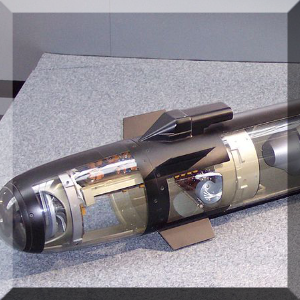 The AGM-114 Hellfire is an
air-to-surface missile (ASM) first developed for anti-armor use, but later models were developed for precision strikes
against other target types, and have been used in a number of targeted killings of high-profile individuals. It was
originally developed under the name Heliborne, Laser, Fire and Forget Missile, which led to the colloquial name
"Hellfire" ultimately becoming the missile's formal name. It has multi-mission, multi-target precision-strike ability,
and can be launched from multiple air, sea, and ground platforms, including the Predator drone. The Hellfire missile
is the primary 100-pound (45 kg) class air-to-ground precision weapon for the armed forces of the United States and
many other nations.
The AGM-114 Hellfire is an
air-to-surface missile (ASM) first developed for anti-armor use, but later models were developed for precision strikes
against other target types, and have been used in a number of targeted killings of high-profile individuals. It was
originally developed under the name Heliborne, Laser, Fire and Forget Missile, which led to the colloquial name
"Hellfire" ultimately becoming the missile's formal name. It has multi-mission, multi-target precision-strike ability,
and can be launched from multiple air, sea, and ground platforms, including the Predator drone. The Hellfire missile
is the primary 100-pound (45 kg) class air-to-ground precision weapon for the armed forces of the United States and
many other nations.
Iridium Satellites
From Wikipedia, the free encyclopedia...
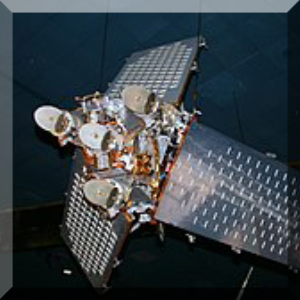 The Iridium satellite
constellation provides L-band voice and data coverage to satellite phones, pagers and integrated transceivers over the
entire Earth surface. Iridium Communications owns and operates the constellation, additionally selling equipment and
access to its services. It was originally conceived by Bary Bertiger, Raymond J. Leopold and Ken Peterson in late 1987
(and protected by patents by Motorola in their names in 1988) and then developed by Motorola on a fixed-price contract
from July 29, 1993, to November 1, 1998, when the system became operational and commercially available.
The Iridium satellite
constellation provides L-band voice and data coverage to satellite phones, pagers and integrated transceivers over the
entire Earth surface. Iridium Communications owns and operates the constellation, additionally selling equipment and
access to its services. It was originally conceived by Bary Bertiger, Raymond J. Leopold and Ken Peterson in late 1987
(and protected by patents by Motorola in their names in 1988) and then developed by Motorola on a fixed-price contract
from July 29, 1993, to November 1, 1998, when the system became operational and commercially available.
Motorola Cell Phones
From Wikipedia, the free encyclopedia...
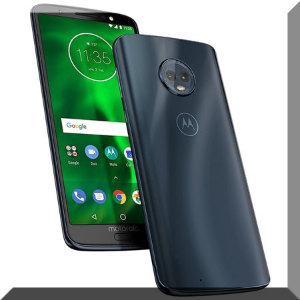 Motorola Mobility LLC is an
American consumer electronics and telecommunications company owned by technology firm Lenovo Group Limited. The
company primarily manufactures smartphones and other mobile devices running the Android operating system developed by
Google.
Motorola Mobility LLC is an
American consumer electronics and telecommunications company owned by technology firm Lenovo Group Limited. The
company primarily manufactures smartphones and other mobile devices running the Android operating system developed by
Google.
IFOG (Interferometric Fiber Optical Gyroscope System)
From Synopsys® | Optical Solutions - Website...
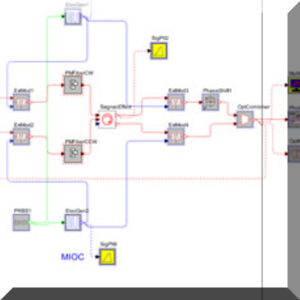 The I-FOG is based on the
Sagnac effect, which produces in a ring interferometer a phase difference proportional to the dot
product of the rotation rate vector by the area vector enclosed by the optical path, and takes advantage
of single-mode optical fiber as the propagation medium. Several critical system components and design
characteristics affect the FOG performance: the coil optical fiber; the active source; the passive and
integrated-optics components; the optical circuit configuration for reciprocity; and the detection
schemes.
The I-FOG is based on the
Sagnac effect, which produces in a ring interferometer a phase difference proportional to the dot
product of the rotation rate vector by the area vector enclosed by the optical path, and takes advantage
of single-mode optical fiber as the propagation medium. Several critical system components and design
characteristics affect the FOG performance: the coil optical fiber; the active source; the passive and
integrated-optics components; the optical circuit configuration for reciprocity; and the detection
schemes.
Lockheed Martin F-22 Raptor
From Wikipedia, the free encyclopedia...
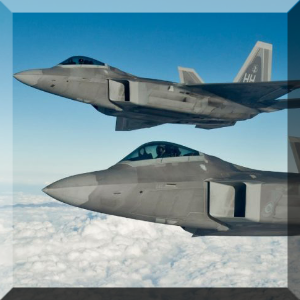 The Lockheed Martin
F-22 Raptor
is a single-seat, twin-engine, all weather stealth tactical fighter aircraft developed for the United
States Air Force (USAF). The result of the USAF's Advanced Tactical Fighter program, the aircraft was
designed primarily as an air superiority fighter, but has additional capabilities including ground
attack, electronic warfare, and signals intelligence roles.[6] Lockheed Martin is the prime contractor
and is responsible for the majority of the airframe, weapon systems, and final assembly of the F-22,
while program partner Boeing provides the wings, aft fuselage, avionics integration, and training
systems.
The Lockheed Martin
F-22 Raptor
is a single-seat, twin-engine, all weather stealth tactical fighter aircraft developed for the United
States Air Force (USAF). The result of the USAF's Advanced Tactical Fighter program, the aircraft was
designed primarily as an air superiority fighter, but has additional capabilities including ground
attack, electronic warfare, and signals intelligence roles.[6] Lockheed Martin is the prime contractor
and is responsible for the majority of the airframe, weapon systems, and final assembly of the F-22,
while program partner Boeing provides the wings, aft fuselage, avionics integration, and training
systems.
The aircraft was variously designated F-22 and F/A-22 prior to formally entering service in December 2005 as the F-22A. Despite a protracted development as well as operational issues, the USAF considers the F-22 a critical component of its tactical air power, and states that the aircraft is unmatched by any known or projected fighter.[7] The Raptor's combination of stealth, aerodynamic performance, and situational awareness gives the aircraft unprecedented air-to-air capabilities.[8] Air Chief Marshal Angus Houston, former Chief of the Australian Defence Force, said in 2004 that the "F-22 will be the most outstanding fighter plane ever built."[9]
The high cost of the aircraft, a lack of clear air-to-air missions due to delays in Russian and Chinese fighter programs, a ban on exports, and development of the more versatile and lower cost F-35 led to the end of F-22 production.[N 1] A final procurement tally of 187 operational production aircraft was established in 2009 and the last F-22 was delivered to the USAF in 2012.
J.S.F. (Joint Strike Fighter) Program
From Wikipedia, the free encyclopedia...
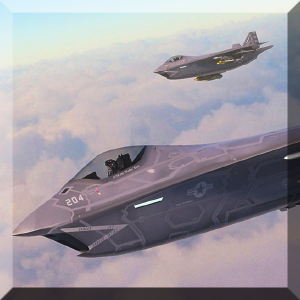 Joint Strike
Fighter (JSF) is a
development and acquisition program intended to replace a wide range of existing fighter, strike, and
ground attack aircraft for the United States, the United Kingdom, Italy, Canada, Australia, the
Netherlands and their allies. After a competition between the Boeing X-32 and the Lockheed Martin X-35,
a final design was chosen based on the X-35. This is the F-35 Lightning II, which will replace various
tactical aircraft, including the US F-16, A-10, F/A-18, AV-8B and British Harrier GR7 & GR9s, and the
Canadian CF-18. The projected average annual cost of this program is $12.5 billion with an estimated
program life-cycle cost of $1.1 trillion.
Joint Strike
Fighter (JSF) is a
development and acquisition program intended to replace a wide range of existing fighter, strike, and
ground attack aircraft for the United States, the United Kingdom, Italy, Canada, Australia, the
Netherlands and their allies. After a competition between the Boeing X-32 and the Lockheed Martin X-35,
a final design was chosen based on the X-35. This is the F-35 Lightning II, which will replace various
tactical aircraft, including the US F-16, A-10, F/A-18, AV-8B and British Harrier GR7 & GR9s, and the
Canadian CF-18. The projected average annual cost of this program is $12.5 billion with an estimated
program life-cycle cost of $1.1 trillion.
Boeing AH-64 Apache Helicopter
From Wikipedia, the free encyclopedia...
 The Boeing AH-64 Apache
is an
American twin-turboshaft attack helicopter with a tailwheel-type landing gear arrangement and a tandem
cockpit for a crew of two. It features a nose-mounted sensor suite for target acquisition and night
vision systems. It is armed with a 30 mm (1.18 in) M230 chain gun carried between the main landing gear,
under the aircraft's forward fuselage, and four hardpoints mounted on stub-wing pylons for carrying
armament and stores, typically a mixture of AGM-114 Hellfire missiles and Hydra 70 rocket pods. The
AH-64 has significant systems redundancy to improve combat survivability.
The Boeing AH-64 Apache
is an
American twin-turboshaft attack helicopter with a tailwheel-type landing gear arrangement and a tandem
cockpit for a crew of two. It features a nose-mounted sensor suite for target acquisition and night
vision systems. It is armed with a 30 mm (1.18 in) M230 chain gun carried between the main landing gear,
under the aircraft's forward fuselage, and four hardpoints mounted on stub-wing pylons for carrying
armament and stores, typically a mixture of AGM-114 Hellfire missiles and Hydra 70 rocket pods. The
AH-64 has significant systems redundancy to improve combat survivability.
Space Shuttle
From Wikipedia, the free encyclopedia...
 The Space Shuttle was a
partially reusable low Earth orbital spacecraft system that was operated by the U.S. National
Aeronautics and Space Administration (NASA) as part of the Space Shuttle program. Its official program
name was Space Transportation System (STS), taken from a 1969 plan for a system of reusable spacecraft
of which it was the only item funded for development. The first of four orbital test flights occurred
in 1981, leading to operational flights beginning in 1982. In addition to the prototype whose completion
was cancelled, five complete Shuttle systems were built and used on a total of 135 missions from 1981 to
2011, launched from the Kennedy Space Center (KSC) in Florida. Operational missions launched numerous
satellites, interplanetary probes, and the Hubble Space Telescope (HST); conducted science experiments
in orbit; and participated in construction and servicing of the International Space Station. The Shuttle
fleet's total mission time was 1322 days, 19 hours, 21 minutes and 23 seconds.
The Space Shuttle was a
partially reusable low Earth orbital spacecraft system that was operated by the U.S. National
Aeronautics and Space Administration (NASA) as part of the Space Shuttle program. Its official program
name was Space Transportation System (STS), taken from a 1969 plan for a system of reusable spacecraft
of which it was the only item funded for development. The first of four orbital test flights occurred
in 1981, leading to operational flights beginning in 1982. In addition to the prototype whose completion
was cancelled, five complete Shuttle systems were built and used on a total of 135 missions from 1981 to
2011, launched from the Kennedy Space Center (KSC) in Florida. Operational missions launched numerous
satellites, interplanetary probes, and the Hubble Space Telescope (HST); conducted science experiments
in orbit; and participated in construction and servicing of the International Space Station. The Shuttle
fleet's total mission time was 1322 days, 19 hours, 21 minutes and 23 seconds.
Boeing 747 & 777
From Wikipedia, the free encyclopedia...
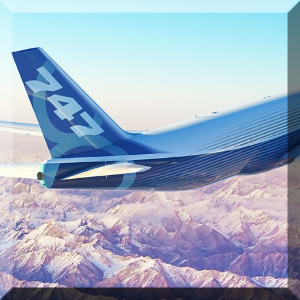 The Boeing 747 is an American
wide-body commercial jet airliner and cargo aircraft. The first wide-body airplane produced, it was the first plane
dubbed a "Jumbo Jet". Its distinctive hump upper deck along the forward part of the aircraft has made it one of the
most recognizable aircraft[9]. Manufactured by Boeing's Commercial Airplane unit in the United States, the 747 was
originally planned to have 150 percent greater capacity than the Boeing 707,[10] a common large commercial aircraft of
the 1960s. First flown commercially in 1970, the 747 held the passenger capacity record for 37 years.[11]
The Boeing 747 is an American
wide-body commercial jet airliner and cargo aircraft. The first wide-body airplane produced, it was the first plane
dubbed a "Jumbo Jet". Its distinctive hump upper deck along the forward part of the aircraft has made it one of the
most recognizable aircraft[9]. Manufactured by Boeing's Commercial Airplane unit in the United States, the 747 was
originally planned to have 150 percent greater capacity than the Boeing 707,[10] a common large commercial aircraft of
the 1960s. First flown commercially in 1970, the 747 held the passenger capacity record for 37 years.[11]
The Boeing 777 (Triple Seven) is a long-range wide-body twin-engine jet airliner developed and manufactured by Boeing Commercial Airplanes. It is the world's largest twinjet and has a typical seating capacity of 314 to 396 passengers, with a range of 5,240 to 8,555 nautical miles (9,704 to 15,844 km). Commonly referred to as the "Triple Seven",[5][6] its distinguishing features include large-diameter turbofan engines, long raked wings, six wheels on each main landing gear, fully circular fuselage cross-section,[7] and a blade-shaped tail cone.[8] Developed in consultation with eight major airlines, the 777 was designed to replace older wide-body airliners and bridge the capacity difference between Boeing's 767 and 747. As Boeing's first fly-by-wire airliner, it has computer-mediated controls. It was also the first commercial aircraft to be designed entirely with computer-aided design.
Airbus A320/A340 Cockpits
From Wikipedia, the free encyclopedia...
 The Airbus A320 family consists of short- to
medium-range, narrow-body, commercial passenger twin-engine jet airliners by Airbus. The family includes the A318,
A319, A320 and A321, as well as the ACJ business jet. The A320s are also named A320ceo (current engine option)
following the introduction of the A320neo (new engine option). The aircraft family can accommodate up to 236
passengers and has a range of 3,100 to 12,000 km (1,700 to 6,500 nmi), depending on model.
The Airbus A320 family consists of short- to
medium-range, narrow-body, commercial passenger twin-engine jet airliners by Airbus. The family includes the A318,
A319, A320 and A321, as well as the ACJ business jet. The A320s are also named A320ceo (current engine option)
following the introduction of the A320neo (new engine option). The aircraft family can accommodate up to 236
passengers and has a range of 3,100 to 12,000 km (1,700 to 6,500 nmi), depending on model.
The Airbus A340 is a long-range, four-engine, wide-body commercial passenger jet airliner that was developed and produced by the European aerospace company Airbus. The A340 was assembled in Toulouse, France. It seats up to 375 passengers in the standard variants and 440 in the stretched -600 series. Depending on the model, it has a range of 6,700 to 9,000 nautical miles (12,400 to 16,700 km; 7,700 to 10,400 mi). Its distinguishing features are four high-bypass turbofan engines and three-leg main landing gear.
First Motorola Digital Flip phone and Cellular base stations
From Wikipedia, the free encyclopedia...
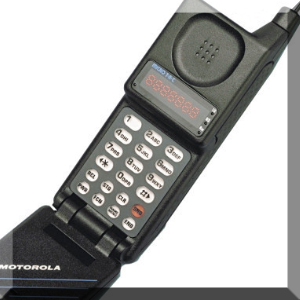 The Motorola StarTAC, first
released on 3 January 1996, is the first ever clamshell (flip) mobile phone. The StarTAC is the successor of the
MicroTAC, a semi-clamshell design first launched in 1989.[3] Whereas the MicroTAC's flip folded down from below the
keypad, the StarTAC folded up from above the display. In 2005, PC World named the StarTAC as the 6th Greatest Gadget
of the Past 50 Years (out of a list of fifty). The StarTAC was among the first mobile phones to gain widespread
consumer adoption; approximately 60 million StarTACs were sold.
The Motorola StarTAC, first
released on 3 January 1996, is the first ever clamshell (flip) mobile phone. The StarTAC is the successor of the
MicroTAC, a semi-clamshell design first launched in 1989.[3] Whereas the MicroTAC's flip folded down from below the
keypad, the StarTAC folded up from above the display. In 2005, PC World named the StarTAC as the 6th Greatest Gadget
of the Past 50 Years (out of a list of fifty). The StarTAC was among the first mobile phones to gain widespread
consumer adoption; approximately 60 million StarTACs were sold.
Motorola Computers
From Wikipedia, the free encyclopedia...
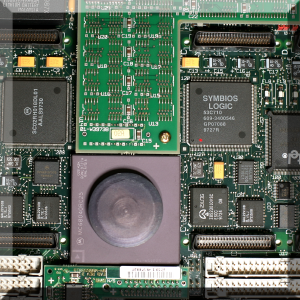 Motorola Single Board
Computers is Motorola's production line of computer boards for embedded systems. There are three different lines :
mvme68k, mvmeppc and mvme88k. The first version of the board appeared in 1988. Motorola still makes those boards and
the last one is MVME3100.
Motorola Single Board
Computers is Motorola's production line of computer boards for embedded systems. There are three different lines :
mvme68k, mvmeppc and mvme88k. The first version of the board appeared in 1988. Motorola still makes those boards and
the last one is MVME3100.
SDI/Star Wars Project
From Wikipedia, the free encyclopedia...
 The Strategic Defense Initiative
(SDI) was a proposed missile defense system intended to protect the United States from attack by ballistic strategic
nuclear weapons (intercontinental ballistic missiles and submarine-launched ballistic missiles). The concept was first
announced publicly by President Ronald Reagan on 23 March 1983.[1] Reagan was a vocal critic of the doctrine of mutual
assured destruction (MAD), which he described as a "suicide pact", and he called upon the scientists and engineers of
the United States to develop a system that would render nuclear weapons obsolete.
The Strategic Defense Initiative
(SDI) was a proposed missile defense system intended to protect the United States from attack by ballistic strategic
nuclear weapons (intercontinental ballistic missiles and submarine-launched ballistic missiles). The concept was first
announced publicly by President Ronald Reagan on 23 March 1983.[1] Reagan was a vocal critic of the doctrine of mutual
assured destruction (MAD), which he described as a "suicide pact", and he called upon the scientists and engineers of
the United States to develop a system that would render nuclear weapons obsolete.
Advanced EHF Satellites
From Wikipedia, the free encyclopedia...
 Advanced Extremely High
Frequency (AEHF) is a series of communications satellites operated by the United States Air Force Space Command. They
will be used to relay secure communications for the Armed Forces of the United States, the British Armed Forces, the
Canadian Armed Forces and the Royal Netherlands Armed Forces. The system will consist of six satellites in
geostationary orbits, four of which have been launched. AEHF is backward compatible with, and will replace, the older
Milstar system and will operate at 44 GHz Uplink (EHF band) and 20 GHz Downlink (SHF band). AEHF systems is a joint
service communications system that will provide survivable, global, secure, protected, and jam-resistant
communications for high-priority military ground, sea and air assets. It is the follow-on to the Milstar system. AEHF
systems' uplinks and crosslinks will operate in the extremely high frequency (EHF) range and downlinks in the super
high frequency (SHF) range.
Advanced Extremely High
Frequency (AEHF) is a series of communications satellites operated by the United States Air Force Space Command. They
will be used to relay secure communications for the Armed Forces of the United States, the British Armed Forces, the
Canadian Armed Forces and the Royal Netherlands Armed Forces. The system will consist of six satellites in
geostationary orbits, four of which have been launched. AEHF is backward compatible with, and will replace, the older
Milstar system and will operate at 44 GHz Uplink (EHF band) and 20 GHz Downlink (SHF band). AEHF systems is a joint
service communications system that will provide survivable, global, secure, protected, and jam-resistant
communications for high-priority military ground, sea and air assets. It is the follow-on to the Milstar system. AEHF
systems' uplinks and crosslinks will operate in the extremely high frequency (EHF) range and downlinks in the super
high frequency (SHF) range.
Qualcomm cell phones and base stations
From Wikipedia, the free encyclopedia...
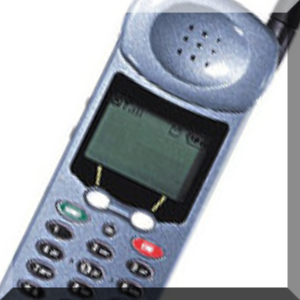 Qualcomm pioneered the
commercialization of the cdmaOne (IS-95) standard for wireless cellular communications, following up with CDMA2000, an
early standard for third-generation (3G) mobile.
Qualcomm pioneered the
commercialization of the cdmaOne (IS-95) standard for wireless cellular communications, following up with CDMA2000, an
early standard for third-generation (3G) mobile.
Today, the company is the leading patent holder in advanced 3G mobile technologies, including CDMA2000 1xEV-DO and its evolutions; WCDMA and its higher-speed variant known as HSPA and its evolutions; and TD-SCDMA; as well as patents on 4G. The license streams from the patents on these inventions, and related products, are a major component of Qualcomm's business.
In June 2011, Qualcomm announced that it would release a set of application programming interfaces geared to give Web-based applications deeper links into hardware.
Alcatel's ADSL equipment
From Wikipedia, the free encyclopedia...
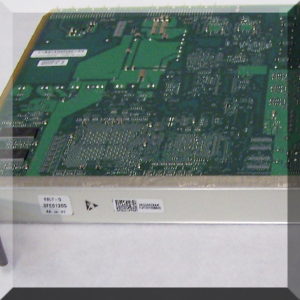 Asymmetric digital subscriber line (ADSL)
is a type of digital subscriber line (DSL) technology, a data communications technology that enables faster data
transmission over copper telephone lines than a conventional voiceband modem can provide. ADSL differs from the less
common symmetric digital subscriber line (SDSL). In ADSL, bandwidth and bit rate are said to be asymmetric, meaning
greater toward the customer premises (downstream) than the reverse (upstream). Providers usually market ADSL as a
service for consumers for Internet access for primarily downloading content from the Internet, but not serving content
accessed by others.
Asymmetric digital subscriber line (ADSL)
is a type of digital subscriber line (DSL) technology, a data communications technology that enables faster data
transmission over copper telephone lines than a conventional voiceband modem can provide. ADSL differs from the less
common symmetric digital subscriber line (SDSL). In ADSL, bandwidth and bit rate are said to be asymmetric, meaning
greater toward the customer premises (downstream) than the reverse (upstream). Providers usually market ADSL as a
service for consumers for Internet access for primarily downloading content from the Internet, but not serving content
accessed by others.
Northrop, Martin-Marietta, and General Dynamics satellites
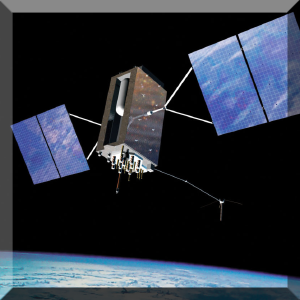 TBD
TBD
Cruise Missile
From Wikipedia, the free encyclopedia...
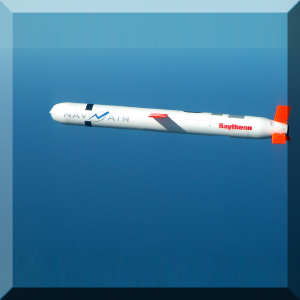 A cruise missile is a guided missile used
against terrestrial targets, that remains in the atmosphere and flies the major portion of its flight path at
approximately constant speed. Cruise missiles are designed to deliver a large warhead over long distances with high
precision. Modern cruise missiles are capable of travelling at supersonic or high subsonic speeds, are
self-navigating, and are able to fly on a non-ballistic, extremely low-altitude trajectory.
A cruise missile is a guided missile used
against terrestrial targets, that remains in the atmosphere and flies the major portion of its flight path at
approximately constant speed. Cruise missiles are designed to deliver a large warhead over long distances with high
precision. Modern cruise missiles are capable of travelling at supersonic or high subsonic speeds, are
self-navigating, and are able to fly on a non-ballistic, extremely low-altitude trajectory.
MMRS & MMLS
From Wikipedia, the free encyclopedia...
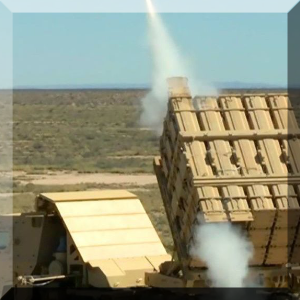 The Multi-Mission Launcher (MML) is a
open-systems architecture multi-role missile launching system created by the United States Army's Aviation and Missile
Research, Development, and Engineering Center.
The Multi-Mission Launcher (MML) is a
open-systems architecture multi-role missile launching system created by the United States Army's Aviation and Missile
Research, Development, and Engineering Center.
Die Packaging
From Wikipedia, the free encyclopedia...
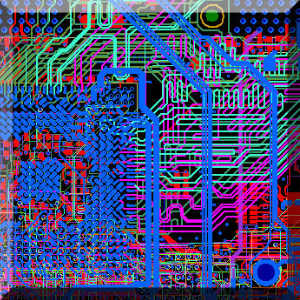 In electronics manufacturing,
integrated circuit packaging is the final stage of semiconductor device fabrication, in which the block of
semiconductor material is encapsulated in a supporting case that prevents physical damage and corrosion. The case,
known as a "package", supports the electrical contacts which connect the device to a circuit board. In the integrated
circuit industry, the process is often referred to as packaging. Other names include semiconductor device assembly,
assembly, encapsulation or sealing. The packaging stage is followed by testing of the integrated circuit. The term is
sometimes confused with electronic packaging, which is the mounting and interconnecting of integrated circuits (and
other components) onto printed-circuit boards.
In electronics manufacturing,
integrated circuit packaging is the final stage of semiconductor device fabrication, in which the block of
semiconductor material is encapsulated in a supporting case that prevents physical damage and corrosion. The case,
known as a "package", supports the electrical contacts which connect the device to a circuit board. In the integrated
circuit industry, the process is often referred to as packaging. Other names include semiconductor device assembly,
assembly, encapsulation or sealing. The packaging stage is followed by testing of the integrated circuit. The term is
sometimes confused with electronic packaging, which is the mounting and interconnecting of integrated circuits (and
other components) onto printed-circuit boards.
Our expert designer knowledge base and state of the art tools allows us to excel in first time technologies.
- Sigrity PowerSI
- Mentor Expedition VX.2.5
- HyperLynx Signal Integrity

